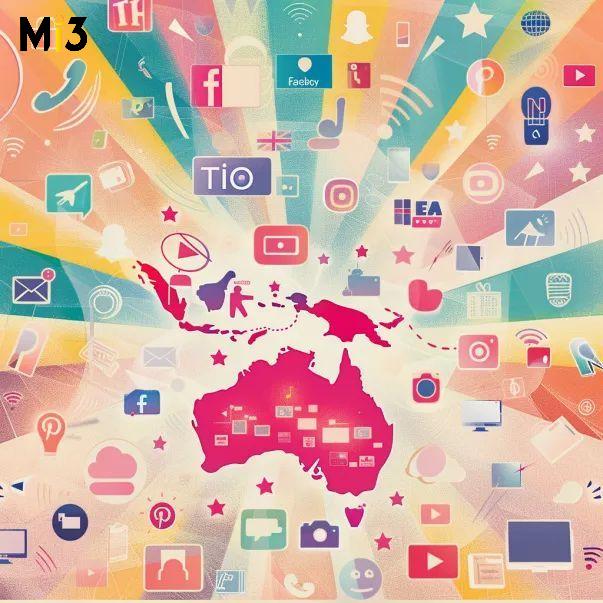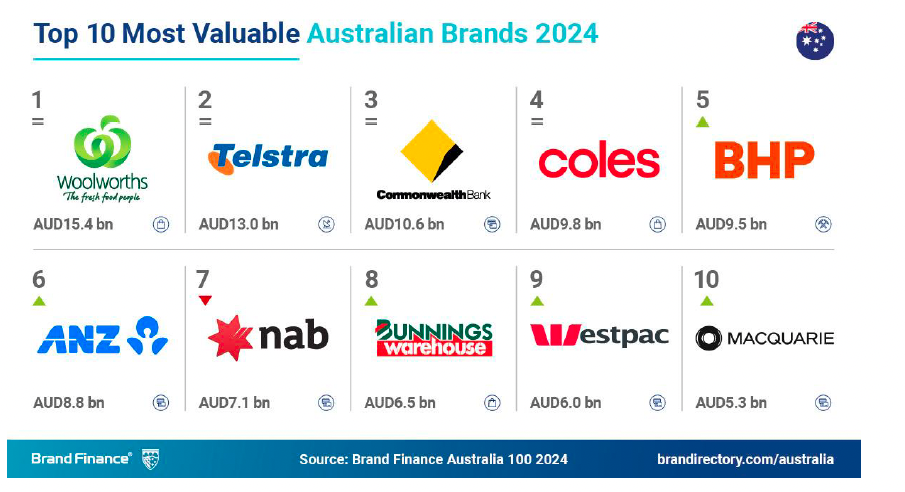Brands failing to keep up with culture suffer pricing power declines as differentiation slides, leading to budget cuts – Kantar warns Australia overindexing on performance marketing, half of ads ‘too dull’ to have any effect

What you need to know:
- Kantar’s 30-plus years of consumer and market data is showing the pace of cultural change has sped up in the last five years, leaving more and more brands struggling to retain cultural relevance.
- Adding to the unprecedented pace of change is the fact the world is in ‘polycrisis’ – a situation where all key levers of culture (social, technological, economic, environmental, political and wellbeing) are being significantly disrupted simultaneously.
- In the face of such shapeshifting, Kantar has witnessed a 50 per cent slide in the number of brands with meaningful difference in market in the last decade – one of the crucial input into having cultural resonance, says managing partner, Mark Kennedy.
- That’s a problem, because according to its figures, brands with high cultural relevance grow six times more than brands with low cultural relevance.
- Meaningful difference is also the primary driver for brands being able to command stronger pricing power. According to Kantar, brands that have strong predisposition to more people thanks to meaningful difference have 9x higher volume share, 2x price paid and 4x the likelihood to grow volume share than brands with weaker predisposition.
- Further inputs into Australian brands’ inability to keep up with cultural are the fact we overindex on bottom-of-funnel activity, plus also exhibit a more risk averse, conservative approach to going to market, says Kennedy.
- In response to the acceleration of cultural change, Kantar is benchmarking brands on their VIBES – scoring them for visionary, innovative, bold, expressive and sustainable principles – to help them understand where they are competitively and culturally, and to adapt accordingly.
If you’re becoming less and less meaningfully different in market, your ability to command price is becoming reduced. If you’re not keeping up with culture, then you’re not meaningfully different, which means your ability to command a price is reduced – so pricing pressure becomes significant on your brand. It’s a negative spiral: Pricing power is reduced, you haven’t got as much marketing budget, so your meaningful difference is hit… and you’ve got this kind of plughole effect.
Cultural disruption is getting worse, faster and more multi-faceted, according to Kantar. Its data suggests the ratio of Australian brands with meaningful difference has halved in the last 10 years, with big impacts on pricing power. Hence the brand and market research consultancy has coined a new imperative it’s hoping will make marketers sit up and take notice of: The era of acceleration.
Data from Kantar’s global, US, millennial and other consumer monitors, which have been running for 30 years, tells Kennedy the currents driving cultural trends and preferences have been accelerating since the arrival of Covid. The result is that 87 per cent of consumers in 2025 feel the world is becoming more hostile, risky and out of control.
“The currents are the unstoppable shifts in the ocean you can’t do anything about, and the waves are what you see on the surface of the ocean, which are more typically the trends,” is the analogy from Kennedy to Mi3. “If you see the waves break, you’re really seeing the result of a current in the ocean manifesting as a trend on top of the ocean.
“Before Covid, we were already monitoring and measuring certain currents, such as health and wellbeing, which has been with us for 20-odd years but has been slowly building as a force in the world. Then Covid hit. While we didn’t actually see any new dynamics emerging, what we did see was those currents in the ocean and shifts in them, speed up dramatically… What it means is culture is coming at us much more quickly than it has been in the past.”
Plopped on top of this is the phenomenon historian, Adam Tooze, has been popularising, first coined by Edgar Morin in the 1970s: Polycrisis, or a situation where markets now face multiple crises at once. Kantar gauges these forces through its ‘STEEPW’ framework: Social, technological, economic, environmental, political and wellbeing. On the list of disruptors? Take your pick: Economic cost-of-living, war in Ukraine and what’s happening in Gaza, political radicalism, Gen AI, social beliefs, wokeness, antiwokeness, climate crisis, the wellbeing craze.
“We started getting this uptick in disruption, and that element of change has carried on since – and it’s effectively getting worse,” says Kennedy. “What’s happening is brands are not so slowly being left behind.”
It’s a very noisy, complex world of comms these days. But if you’re executing and not understanding what’s coming at you or coming at culture down the track, you simply don’t have enough time to execute efficiently. This is a challenge for business because it feels intrinsically risky to execute against a future idea that’s coming at you. It feel intrinsically less risky to execute against the thing you’re already seeing in market. However, the opposite is true: If you’re executing against what you’re seeing in market, it’s intrinsically risky because it’s very difficult to keep pace with the market.
Brands are losing their meaningful difference
To back up the claim, Kennedy is combining Kantar’s Brand Z equity data, plus Kantar Blueprint, its brand growth model. The latter is based on 5.4 billion attitudinal data points from over 21,000 brands in 540 categories and 54 markets, plus 1.1bn purchase data points spanning 10 years. It all points to brands sliding when it comes to meaningful difference in the eyes of consumers.
“Over the last decade, brands that are perceived as being meaningfully different – so keeping up with culture for want of a better phase – have dropped by 51 per cent in Australia over the last decade,” says Kennedy. “That meaningful difference drives pricing power in market.
In Kantar’s methodologies, pricing power is primarily driven by meaning and difference and the weighting of these two metrics varies by category. Meaningful difference increases your pre-disposition, which has two outcomes: To buy more and to pay more.
“So if you’re becoming less and less meaningfully different in market, your ability to command price is becoming reduced. If you’re not keeping up with culture, if you’re not keeping pace, then you’re not meaningfully different, which means your ability to command a price is reduced – so pricing pressure becomes significant on your brand,” explains Kennedy. “It’s a negative spiral: Pricing power is reduced, you haven’t got as much marketing budget, so your meaningful difference is hit and you’ve got this kind of plughole effect.”
According to Kantar, brands that have strong predisposition to more people have 9x higher volume share, 2x price paid, 4x the likelihood to grow volume share than brands with weaker predisposition.
Too much bottom-of-funnel and dull work
Another contributor to Australian marketing woes is our nation’s fixation on bottom-of-funnel activity – we’re overindexing on this compared to the rest of the world.
“What we see when we look at marketing effectiveness around the world is companies or brands in Australia disproportionately are bottom-of-the-funnel orientated,” continues Kennedy. “So basically, they’re very sales-driven and very short term. That’s not to say the problem doesn’t exist in other markets, because it does… you can see it through brands dropping in and out of the S&P 500 for example.
“But it’s amplified by Australian companies orientating to communication and performance marketing, for want of a better phrase.”
At an aggregate level, Kantar has found if brands move from a 70 per cent performance bottom-of-funnel weighting and 30 per cent top-of-funnel to a 50/50 split, typically there is a 10 per cent lift in baseline sales.
Pile on top of that the dull factor. Kantar’s data – this time, through its LINK+ creative testing database – shows 51 per cent of content made in Australia is not different and therefore has no impact – positive or negative. Only about 25-30 per cent of advertising is pretty good, and just 10 per cent makes it into the great category.
The figures align with similar data from fellow creative testers, System 1. In its 2024 project, The Extraordinary Cost of Dull, System 1 found 52 per cent of all UK TV ads triggered no emotional response at all; things were marginally better in the US (47 per cent). Using Nielsen TV spend data it then calculated extremely dull ads would need to spend US$109bn more to get the same predicted result as non-dull ads.
The Pepsi / Kendall Jenner flop
What marketers need to do is somehow get ahead of these currents and find a way to position themselves to ride the wave when it hits. To do this, Kantar’s framework for cultural change looks at recessive, dominant and emergent trends. The challenge here is with culture moving so fast, any insight on what’s happening today will be recessive by the time a marketer does anything about executing against it. Take Threads: It reached 1 million users in a lunch time, something that took Netflix three-and-a-half years to do.
Or a more poignant campaign example comes from Kennedy: The Pepsi Kendall Jenner ad. “They tapped into Black Lives Matter, but by the time they had created this monolithic anthem ad, that had moved. And by the time they launched it, they were culturally wrong because they missed the zeitgeist. Then you get Kendall Jenner suing Pepsi for the damage to her own brand, because they’ve landed too late,” Kennedy says.
“It’s a very noisy, complex world of comms these days. But if you’re executing and not understanding what’s coming at you or coming at culture down the track, you simply don’t have enough time to execute efficiently.
“This is a challenge for business because it feels intrinsically risky to execute against a future idea that’s coming at you. It feel intrinsically less risky to execute against the thing you’re already seeing in market. However, the opposite is true: If you’re executing against what you’re seeing in market, it’s intrinsically risky because it’s very difficult to keep pace with the market.”
The AI mouse trap
Where Kennedy agrees we’re facing yet another fresh data and creative tension that could impact meaningful difference is with the arrival of AI. There is increasing speculation we’re on the cusp of ‘infinite creative’ – per Meta’s ambitions – that could see the whole current creative process wiped out in favour of on the fly, end-to-end AI iteration based on data, to convince consumers to convert.
“I think you’ve nailed the tension. Inherently, I don’t think that’s an AI question – AI is only as good as the data it’s pulling from. The more general, big and broad the data is just on a simple bell curve, the more normative your result will be,” argues Kennedy. “Are you truly differentiating or are you building a better mousetrap? Are you just optimising the norm? Or are you truly bringing something meaningful and different to the market?”
Kennedy compares it to the aspiration / action gap: What do consumers aspire to do, versus what do they actually do? And what’s their behaviour really telling you?
“I certainly used to hear people say, ‘well, see, consumers say one thing, but do another’. Whereas actually the aspiration action gap is where all the money is, because that’s where the innovation opportunity sits. If you’re building solutions of consumer inspiration, you’re getting ahead of the market,” he adds. “If you’re building your product off current consumer behaviour, you’re already behind the market, so you’re optimising something that’s already late.”
How to navigate cultural change
So who’s actually any good at this game of cresting cultural currents? Kennedy points to Apple as a shining example. He also flags Nike – if you exclude that recent blip of direct-to-consumer failure and the one-day US$27.5bn share price dive it caused.
“If you forget the mess they made of their distribution, Nike is a good example. The core idea is about winning, victory. Brands don’t define culture, but they can keep pace with it,” Kennedy says. “If you think of Nike, back in the 1980s, 1990s, it was winning over others with Michael Jordan crushing the enemy. During the 2000 Olympics in Sydney, there was the work around the fact you don’t win silver, you lose gold. It was very binary Americana. Then they moved to that platform, which was winning over your own self limitations and all of that dynamic they played out there. Then it’s moved to winning over social inequity with the Colin Kaepernick campaign. What they’ve done is they’ve constantly kept up with culture by talking about winning in the way that’s relevant to culture at the moment.”
Others riding today’s cultural wave include Ozempic and GLP-1, says Kennedy. These diet drugs are keeping pace with one of the biggest forces in the world at the moment: Wellbeing and controlling your own health.
“In a world that feels incredibly disrupted, people are seeking a sense of control. And whilst they can’t control the world, they’re looking at things in their life they can control, like their skin care and health regime. You’ve got some sense of control over that, even if you can’t control war in Europe. So you’re seeing exponential growth in categories that offer some degree of control and empowerment to the market,” says Kennedy.
It’s the vibe…
But what does it take to even attempt to keep up with rapidly changing culture? One of Kantar’s answers to this is its VIBES cultural vibrancy tools – a speed in market measure around key tentpoles like being visionary, innovative, bold, expressive and sustainable. Kantar data shows brands in the top third of its VIBES benchmarking index grow 6x more than those in the lower third.
“How visionary are you? That’s leadership and what have you. How innovative are you? Are you changing the market? How bold are you perceived? How expressive are you in terms of your creative and your execution? And then, how sustainable are you?” Kennedy asks.
And finally, how sustainable are you? That’s not on the backburner despite what the cost-of-living crisis has taught you, according to Kennedy.
“That’s simply not borne out in the numbers,” he says. Kantar’s Sustainability Sector Index across 25 countries revealed 74 per cent of people believe businesses have a responsibility to make society fairer, and 64 per cent said it is businesses’ responsibility to solve climate and environmental issues. In addition, sustainability perceptions alone contribute up to 10 per cent of the value of the brands in the kantar BrandZ Top 100 global brands. The caveat here is that does not mean consumers are willing to pay more, rather they are rejecting those that don’t have commitment. But what it does show also is that brands without a sustainability platform tend to struggle with their pricing power.
“As a point of differentiation, sustainability is still a massive definer of vibrancy or speed in market. And I’m using sustainability in its broader term, it’s not just environmental, it could be social. They can be whatever. But by understanding how vibrant you are in market, you get a measure of your speed in comparison to your competitive set and culture,” he says.
It’s no good trying to rely on just one of the various cultural inputs, however. Brands, for example, will commonly rely on communications to do the work – the expressive piece in Kantar’s model – yet the business lacks vision or innovation, Kennedy says.
“I think a lot of businesses, particularly in Australia, are inherently conservative, so they may not be as visionary as they could be given the speed of change in markets and dynamics in Australia, which we’re seeing everywhere,” he comments. “We’re seeing the concerns of consumers and everyday Australians not really being met by businesses. What’s easier to see is politics not delivering to that. It’s just easier to see; brands are the same, but I think politics is easier to see in media. Expressive execution can’t do all the heavy lifting for you. You have to get all of those things working to get true momentum into your business. That’s certainly what we see. It’s not a new campaign or a new ad campaign. While a good ad campaign can make a massive difference… Your execution isn’t going to pull you out of that.”
Avoid solving problems consumers don’t know they have
As a final tip, Kennedy advises brands not to go wading into a problem/solution narrative. “What people are not looking for from brands is brands solving problems they didn’t already know they had,” he warns.
“If you think of a typical brand campaign, it tends to be: This is a problem you don’t know you’ve got, we’re going to solve it for you. There’s a big push against that problem/solution narrative at the moment for consumers. Basically, brands that offer people empowerment and ease, whether it be wearable tech, euphorics in drinking, skincare, as we’ve said, or brands that offer some degree of self-care to m– – electric toothbrushes or things like that: Anything that gives people a sense of greater ease, greater control, greater autonomy, those are the categories you’ll see growing and brands growing really aggressively.”





